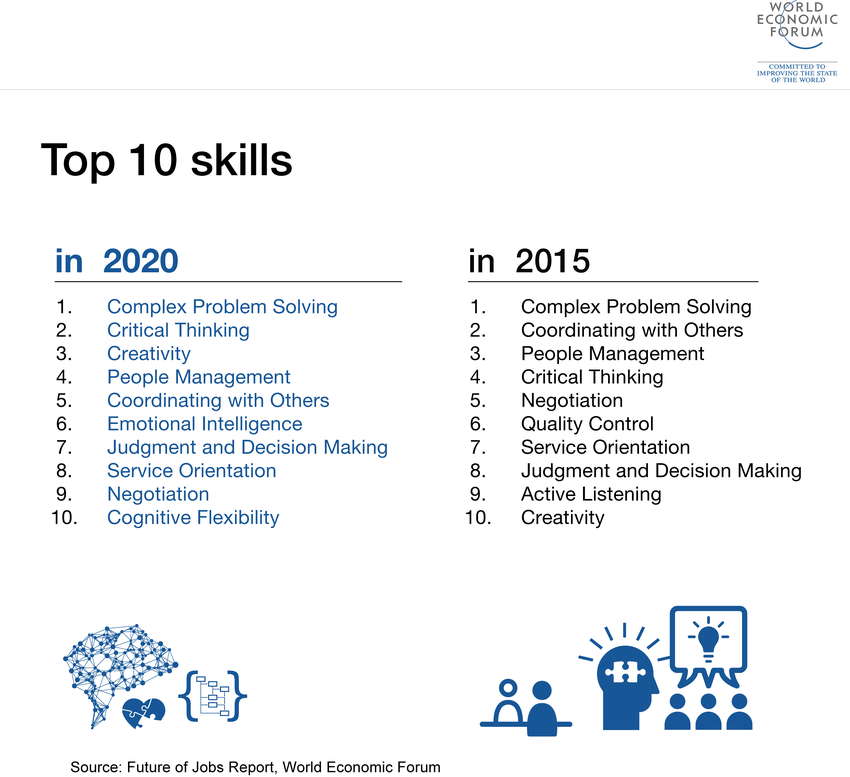
Lessons from 20 years of researching and teaching creative thinking
By Harry Vardis
Popular and scholarly literature supports the notion that creativity and innovation is becoming the new core competency of corporations and that a company’s greatest asset may be its creative capital. (Harvard Business Review, July-August 2005)
Headhunters and recruiters suggest that the most critical attributes are looking for when recruiting new MBA’s or other mid- level management candidates are: To be good communicators, to have the ability to solve problems and to be good team players. (WSJ September 2009) Creativity plays an enormous role in each of those attributes. Innovation in organizations starts with tapping into the creative potential of all employees and their knowledge about customers, competitors and processes. (Leavy, 2005) It is the role of the educators to turn out a workforce with creative potential.
More recently the World Economic Forum updated the critical traits in the future of jobs report from #10 to #3 position.
Individuals need to grow in order to meet the needs of corporate America. They also need to grow to satisfy their own needs. Their greatest potential for growth is in the use of their creativity.
Today’s graduate and undergraduate programs may not be teaching enough of this Creativity on Demand or Creative Problem Solving. A survey by the authors of this article found that only about half of all traditional MBA and Executive MBA programs addressed creativity and innovation at all, and only one-third had standalone courses that addressed these subjects. (Selden, G.L. and Vardis, H., Benchmarking Survey on Creativity and Innovation in MBA Programs, 2005) Perhaps B-schools have not kept up with the needs of today’s hyper-competitive marketplace.
To address these needed attributes a course was created in 1999 by the Creative Focus Institute in conjunction with Emory University’s Goizueta Business school.
The success of this course has led to the development of similar courses at 5 other Universities.
One of the most successful forums is at the Coles College of Business at Kennesaw State University in Atlanta where the course is offered as an elective.
It is a 5-day course on applications of creative problem solving in Business and focuses on skills and tools solving complex problems and the creation of more efficient teams. Demand for the course is extremely high with the classes filling up on the first day of registration.
The authors have made many mistakes and have learned many lessons from the development of this course. The articles we will be publishing in this series of “How to teach out-of-the-box thinking” will focus on the process issues and lessons learned to capture the attributes of a successful course in Creativity on Demand.
The content of the course is modularized, and the modules are created around a manager’s daily activities:
- Creative problem-solving techniques
- Business strategy (processes to collect information and analyze it most efficiently)
- Team activities around real business projects are used to teach collaboration
- Effective presentations (Presentation and NLP techniques are taught)
- Dealing with difficult people (Improvisational theater techniques are taught)
- Architectural principles on how to induce creativity and innovation or how to reduce it
- Additionally, the course examines the emotions that drive creative thinking. For instance: Risk taking, support, fear, collaboration, and other emotions.
These are the content objectives of the course. Other courses could look much different from a content perspective. However, we have identified several process issues that make this course successful. These issues are discussed in the following articles for a successful course in Creativity on Demand.
The physical environment
The relationship of room size to the number of students is important. The ratios and the set up are critical to the dynamics of the course.
- 1. Limit the class size
The number of students accepted in the class is usually 36 so that 6 teams of 6 students can be formed.
- 2. Set up the room so that almost everyone can see everyone else
The room is set up in fishbone format the day before or early in the morning when the course starts. The tables for each team are set up in such a way so that there is visual contact among the students and between the students and the faculty.
It is important that the students have at least 210 degrees of visual access to the room at any given moment. A flat room is a must for the main classroom. Auditoriums and tiered seating are not conducive to conducting these classes. 30 Square feet per student is ideal with 6 break out rooms that are needed to be available so that the teams can work on their own time on their assignments.
- 3. Meet and greet them when they first come in
As the students arrive the morning of the first class, all are greeted and welcomed to the room by the faculty that is present on that day. The conversations center on personal interests of the students, the type of work they do, special needs they may have, logistics and other topics of interest to the students.
- 4. Have plenty of wall space to post team work
It is a good idea to have walls with maximum wall space so that each team can have at least 20-30 linear feet of space for the students to post easel sheets and post it notes. Window space is OK to use as long as the sunshine from outside is not shining against the windows.
- 5. Have a table or two to put all the supplies on them. One for the facilitator’s materials and one for handouts for the students
- 6. Be sure to have an easel stand for the facilitator and one for each team.
Don’t miss our next blog on:
“How to Develop Out-of-the-Box ThinkingLessons learned after twenty years of teaching and researching what induces creative thinking”
PART II – Student Centered Creative Learning

